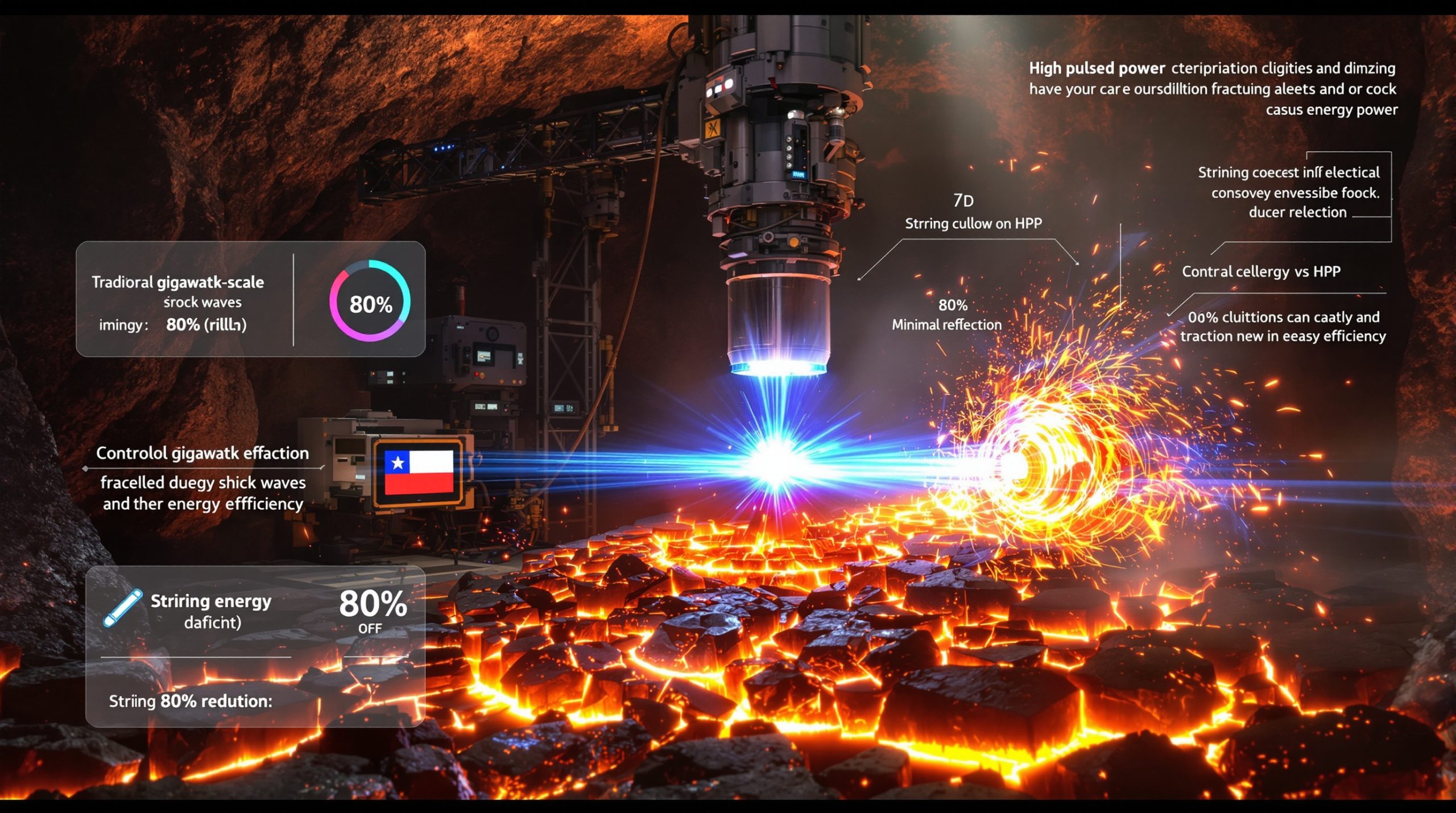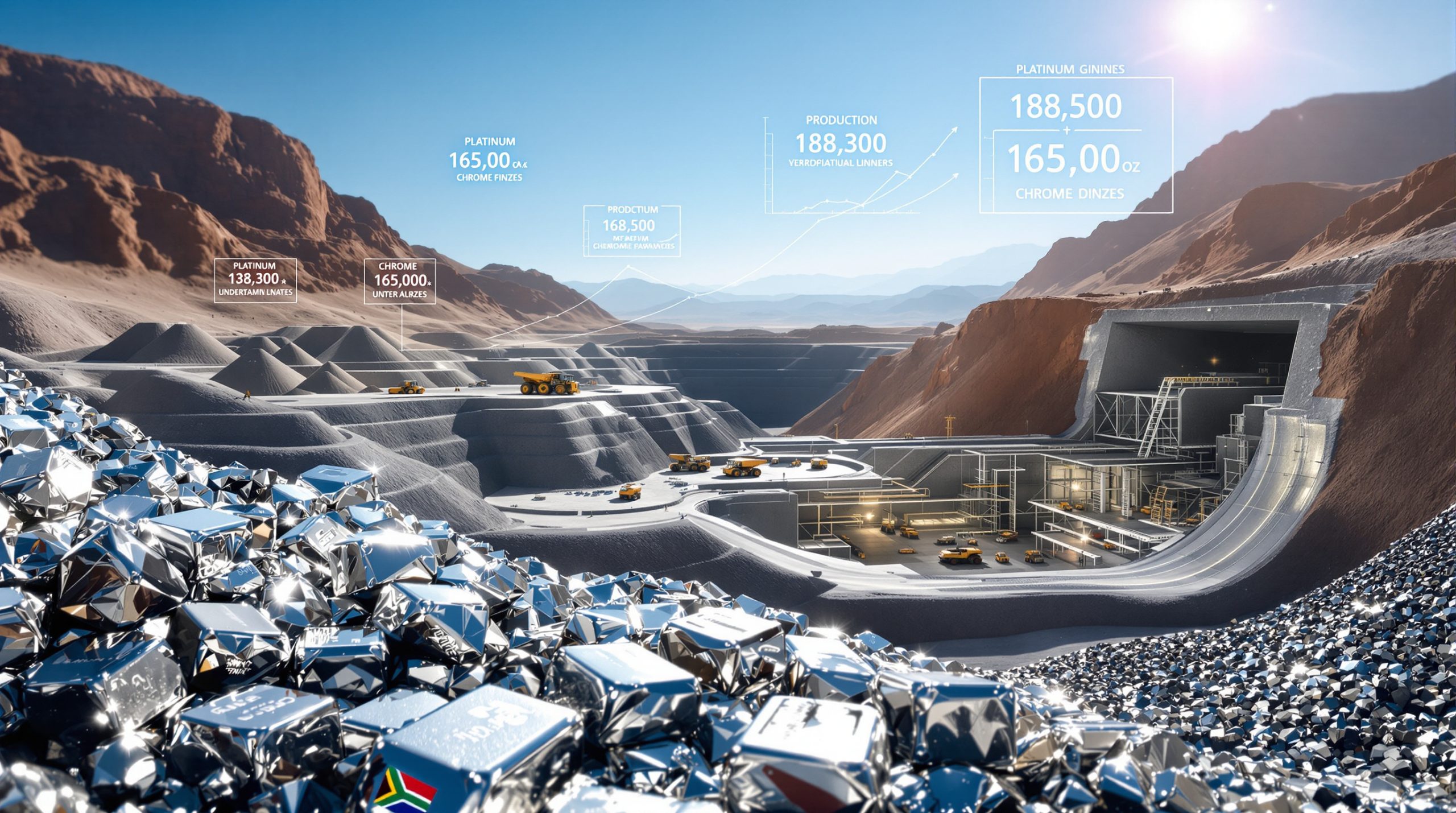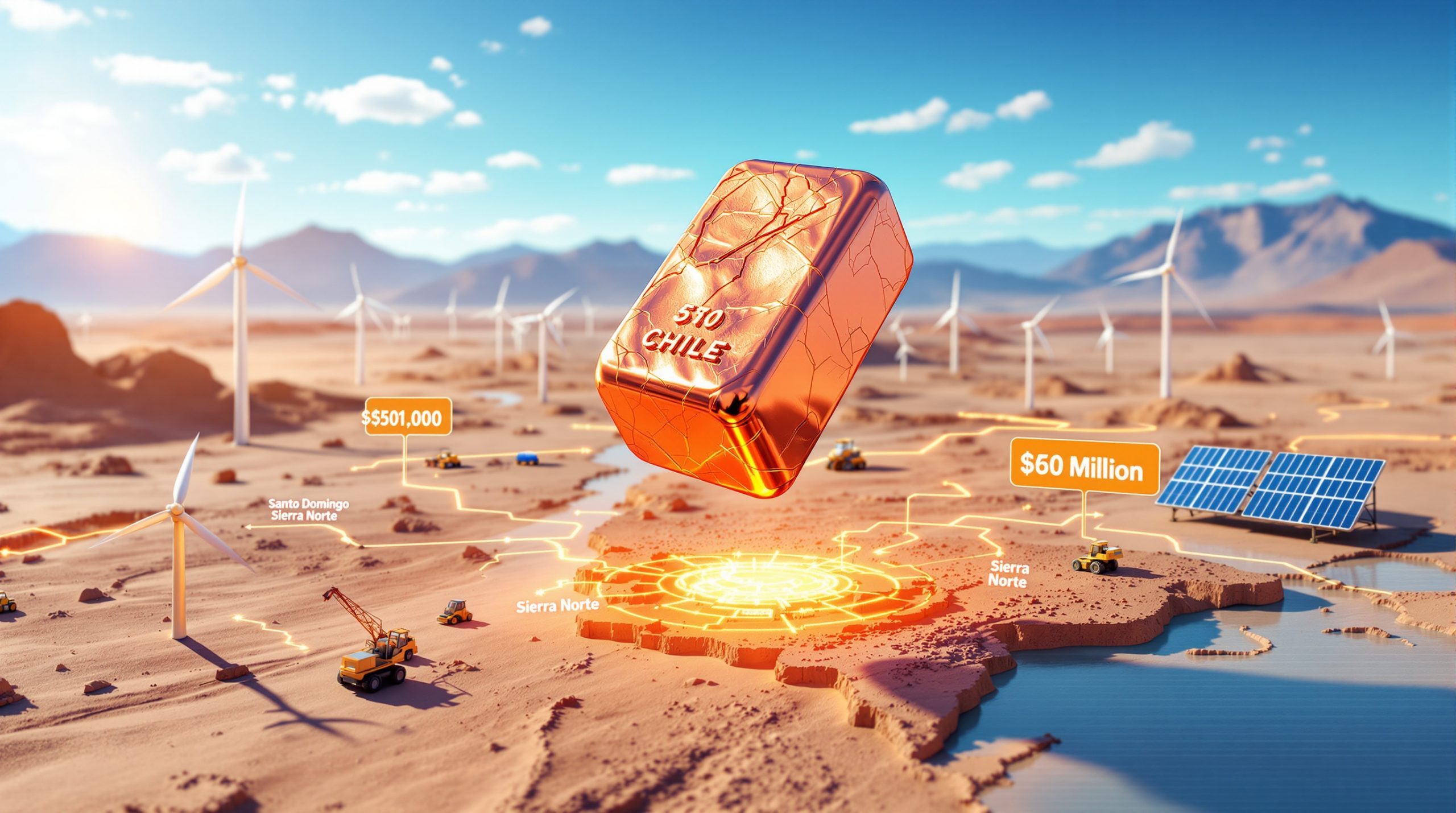Caterpillar's Strategic Acquisition of RPMGlobal: Transforming Mining Technology
The mining industry is witnessing a significant transformation as Caterpillar Inc., one of the world's largest equipment manufacturers, makes a strategic move to enhance its digital capabilities. This comprehensive analysis explores the implications of the Caterpillar RPMGlobal acquisition, examining how this deal is poised to reshape the mining industry evolution landscape.
What Is the Caterpillar-RPMGlobal Acquisition Deal?
Deal Structure and Valuation
Caterpillar Inc. has entered into a definitive agreement to acquire Brisbane-based RPMGlobal Holdings Ltd for approximately USD 728 million (AUD 1.12 billion). The acquisition values RPMGlobal shares at AUD 5.00 each, representing a 33% premium over pre-announcement trading prices, aligning with typical technology sector acquisition premiums which range from 20-40%.
The transaction involves Caterpillar purchasing all outstanding shares of RPMGlobal, which is currently listed on the Australian Securities Exchange (ASX: RUL). J.P. Morgan Securities LLC is serving as Caterpillar's financial advisor for the transaction, guiding the equipment giant through this significant investment.
Timeline and Regulatory Approvals
The acquisition announcement was made on October 12, 2025, marking the beginning of what is expected to be a multi-stage approval process. The deal requires several key regulatory clearances, including approval from RPMGlobal shareholders, the Australian Foreign Investment Review Board (FIRB), and the Australian Competition and Consumer Commission (ACCC).
The ACCC review process typically takes 4-12 weeks for initial assessment, with potential for extended review periods depending on the complexity and potential market impact. Similarly, FIRB reviews foreign investment proposals that may affect Australia's national interest, including those related to critical minerals and resources technology.
Pending successful completion of all regulatory requirements, the closing is anticipated in the first quarter of 2026. This timeline allows for shareholder votes, regulatory reviews, and completion of other customary closing conditions.
Why Is Caterpillar Acquiring RPMGlobal?
Strategic Expansion Beyond Equipment Manufacturing
This acquisition represents a pivotal strategic shift for Caterpillar as it expands beyond its traditional focus on heavy equipment manufacturing. By integrating RPMGlobal's software capabilities, Caterpillar is positioning itself to offer comprehensive solutions that span the entire mining lifecycle from exploration and planning through operations and innovative mine reclamation.
The move follows broader industry trends where equipment manufacturers are increasingly seeking to provide integrated hardware-software solutions. According to a 2023 McKinsey & Company report on digital transformation in mining, major OEMs are actively acquiring or developing software capabilities to deliver more comprehensive lifecycle solutions to their customers.
For Caterpillar, which reported 2023 sales and revenues of $67.1 billion and employs approximately 107,000 people worldwide, this acquisition represents a relatively small financial investment with potentially outsized strategic importance.
Digital Transformation Objectives
At the core of this acquisition is Caterpillar's aim to enhance its mining technology portfolio with RPMGlobal's specialized software solutions. RPMGlobal has established itself as a leading provider of mining-specific software that handles complex tasks including mine planning, simulation, scheduling, and financial modeling.
The integration of these capabilities will strengthen Caterpillar's position in data analytics, simulation, and optimization for mining operations. This aligns with the increasing digitalization of mining operations worldwide, where advanced software solutions are becoming critical for operational efficiency, cost management, and sustainability goals.
By accelerating its digital transformation initiatives in the mining sector, Caterpillar is responding to customer demands for more integrated solutions that can improve operational performance while reducing costs and environmental impact.
How Will This Acquisition Transform Mining Technology?
Integration of Software and Hardware Solutions
One of the most significant impacts of this acquisition will be the creation of a more comprehensive technology ecosystem that combines Caterpillar's equipment expertise with RPMGlobal's software capabilities. This integration promises to deliver solutions that bridge the traditional gap between operational technology (OT) and information technology (IT) systems.
Mining companies have historically struggled with interoperability challenges between equipment and management systems, often requiring complex integration projects to connect disparate technologies. The Caterpillar-RPMGlobal combination has the potential to address these challenges by offering pre-integrated solutions that work seamlessly together.
The reduced implementation complexity could provide substantial benefits for mining operators who currently manage multiple vendor relationships and integration points across their technology stack. A more unified approach could streamline implementation and support while improving overall system performance.
Enhanced Mining Lifecycle Management
The combined entity will be positioned to offer solutions spanning all phases of mining operations from exploration and planning through to operations and eventual reclamation. This comprehensive approach enables more consistent data flow and analysis across traditionally siloed aspects of mining operations.
RPMGlobal's simulation and optimization tools complement Caterpillar's equipment management systems, creating opportunities for more sophisticated planning and operational management. For example, mining companies could leverage modern mine planning technology to optimize fleet composition and deployment based on detailed geological models and production targets.
This lifecycle approach also supports improved asset management, enabling mining companies to make more informed decisions about equipment maintenance, replacement, and utilization throughout the mine's operational life.
Data-Driven Operational Improvements
The acquisition is expected to accelerate development of predictive maintenance capabilities by combining Caterpillar's equipment expertise with RPMGlobal's analytics strengths. According to Deloitte's research, predictive maintenance can reduce equipment downtime by up to 50% and extend asset life by 20-40%, representing significant value for mining operations where equipment reliability is critical.
Combined data analytics capabilities will enable more accurate forecasting of equipment performance and maintenance needs, potentially reducing unplanned downtime and extending asset lifecycles. These improvements directly impact mining companies' bottom lines by increasing equipment availability and reducing maintenance costs.
Enhanced monitoring systems resulting from the integration will help identify operational inefficiencies and optimization opportunities. The ability to analyze data across both equipment performance and operational planning provides a more comprehensive view than either system could deliver independently.
What Are the Market Implications of This Acquisition?
Competitive Landscape Changes
The acquisition positions Caterpillar as a more formidable competitor in the mining technology space, potentially challenging established mining software providers like Hexagon AB (MineSight, HxGN MineProtect), Dassault Systèmes (GEOVIA), and Bentley Systems.
Traditional mining software providers may face increased competition from the combined entity, which can leverage Caterpillar's extensive customer relationships, global support infrastructure, and financial resources. This could drive further innovation and competitive pricing in the mining software market.
The competitive response will likely include other equipment manufacturers accelerating their own software acquisition strategies. Companies like Komatsu, Hitachi Construction Machinery, and Sandvik may feel pressure to enhance their own digital offerings to maintain competitive positioning.
Industry Consolidation Trends
This deal represents a significant step in the ongoing consolidation within the mining technology sector. The PwC "Mine 2023: Unearthing Value" report highlighted that the mining technology sector has experienced consolidation as equipment manufacturers seek to expand their digital capabilities and software providers look for scale.
Previous notable transactions in this space include Hexagon AB's acquisition of MineSight in 2013 for approximately $287 million and Komatsu's acquisition of Joy Global in 2017 for approximately $3.7 billion. The Caterpillar-RPMGlobal deal continues this pattern of hardware manufacturers acquiring software capabilities to create more integrated offerings.
Further integration between equipment and software providers is likely across the mining industry as companies seek to deliver more comprehensive solutions and secure strategic positioning in an increasingly digital mining environment.
Global Mining Technology Market Impact
The global mining software market was valued at approximately $13.6 billion in 2023 and is projected to reach $24.7 billion by 2030, growing at a CAGR of 8.9% according to Grand View Research. The Caterpillar-RPMGlobal combination will likely accelerate this growth by driving increased adoption of integrated solutions.
The combined entity will have enhanced capabilities to serve major mining regions globally, leveraging Caterpillar's extensive dealer network and global presence alongside RPMGlobal's software expertise. This global reach could accelerate technology adoption across diverse mining operations and geographies.
Australian mining operations may see particular benefits given RPMGlobal's regional expertise and understanding of local mining conditions. Similarly, North American and global mining companies will gain access to more integrated technology solutions backed by Caterpillar's established support infrastructure.
How Will Mining Companies Benefit?
Operational Efficiency Improvements
Mining operators can expect more seamless integration between equipment and management systems, potentially eliminating data silos and reducing manual processes. According to McKinsey & Company research, digital technologies can improve mining productivity by 10-20% through better asset utilization and process optimization.
The combined technology stack will enable better optimization of mining operations through integrated planning, scheduling, and execution. This could include optimized haul routes, improved fleet management, and more efficient resource allocation based on real-time operational data.
Enhanced data analytics capabilities will support more informed operational decision-making, allowing mining executives to identify improvement opportunities and quantify the financial impacts of operational changes. This data-driven approach aligns with the industry's increasing focus on data-driven mining operations and continuous improvement.
Sustainability and ESG Advantages
Improved operational efficiency from integrated solutions could reduce fuel consumption and emissions, supporting mining companies' sustainability goals. The International Council on Mining and Metals notes that optimized mine planning can reduce fuel consumption by 10-15% through improved haul road design and fleet management.
Better planning tools may minimize environmental impacts of mining activities through more precise extraction planning, reduced waste, and optimized land use. These improvements support mining companies' efforts to demonstrate responsible resource development and maintain their social license to operate.
Enhanced monitoring capabilities could support more sustainable resource management by providing better visibility into environmental performance and enabling more proactive mitigation of potential issues. This aligns with increasing stakeholder expectations for transparent environmental management in mining operations.
Cost Optimization Opportunities
More effective asset management enabled by integrated solutions could extend equipment lifecycles and reduce capital expenditures. Mining companies typically invest billions in equipment fleets, making even small improvements in asset utilization and lifecycle management financially significant.
Optimized operations may reduce operational costs through improved efficiency in areas such as fuel consumption, maintenance activities, and labor utilization. These efficiency gains directly impact operating margins and competitive positioning.
Predictive maintenance capabilities could minimize costly unplanned downtime by identifying potential equipment issues before they cause failures. For mining operations where equipment availability directly impacts production capacity, these improvements can deliver substantial financial benefits.
What Challenges Could the Acquisition Face?
Integration Complexities
Merging different corporate cultures and operational approaches may present significant challenges. Caterpillar's hardware-focused manufacturing culture will need to effectively integrate with RPMGlobal's software development approach, requiring thoughtful change management and leadership.
Technical integration of disparate software and hardware systems will require careful planning and execution. System compatibility, data migration, and maintaining service continuity during transition periods will all present technical challenges that must be addressed.
Maintaining customer relationships through the transition will be critical to the acquisition's success. Existing RPMGlobal customers may have concerns about changes to product roadmaps, support models, or pricing structures following the acquisition.
Regulatory Considerations
The acquisition must navigate regulatory approvals in multiple jurisdictions, potentially including extended reviews by Australia's FIRB and ACCC. Foreign acquisitions of Australian technology companies, particularly those serving critical industries like mining, often receive heightened scrutiny.
Competition authorities may scrutinize market concentration implications, particularly if the combined entity could potentially limit customer choices or impact pricing dynamics in the mining technology market. The ACCC review will likely focus on whether the acquisition substantially lessens competition in any relevant market.
Foreign investment reviews could extend the timeline for final approval beyond initial expectations, potentially delaying integration planning and execution. This regulatory uncertainty represents a key risk factor for the transaction's completion.
Market Acceptance Factors
Mining companies may have concerns about vendor lock-in with integrated solutions, particularly if they operate mixed equipment fleets or have existing investments in competing software solutions. The combined entity will need to address these concerns with clear interoperability commitments.
Existing RPMGlobal customers using competitors' equipment may question future support and compatibility. Providing clear roadmaps for continued support of multi-vendor environments will be essential for customer retention.
The combined entity will need to demonstrate clear value advantages to overcome market hesitations about the integrated approach. This will require effective communication of tangible benefits and potentially new pricing or deployment models that reduce perceived implementation risks.
How Does This Compare to Other Mining Technology Acquisitions?
Recent Industry Consolidation Patterns
The mining technology sector has seen accelerating consolidation in recent years, with major transactions including Hexagon AB's acquisition of MineSight and subsequent mining technology acquisitions. These deals reflect the increasing strategic importance of software and digital capabilities in mining operations.
Equipment manufacturers have increasingly pursued software capabilities through acquisition rather than internal development, recognizing the challenges of building sophisticated mining software expertise organically. This acquisition approach enables faster market entry and access to established customer bases.
The Caterpillar-RPMGlobal deal represents one of the larger transactions in the mining technology space, signaling the increasing value placed on mining-specific software capabilities by equipment manufacturers.
Valuation Benchmarks
The 33% premium offered for RPMGlobal aligns with typical acquisition premiums in the technology sector, which according to S&P Global Market Intelligence typically range from 20-40% above pre-announcement trading prices. This suggests the valuation is within market expectations despite the strategic importance of the acquisition.
The valuation reflects the strategic importance of software capabilities to equipment manufacturers who recognize the growing role of digital technologies in mining operations. Software companies with mining-specific expertise command premium valuations due to their specialized knowledge and established customer relationships.
Similar acquisitions have commanded comparable premiums due to the scarcity of established mining software providers with global scale and comprehensive capabilities. The specialized nature of mining software and the complexity of the mining industry create barriers to entry that support premium valuations for established players.
Strategic Positioning Analysis
Caterpillar's move parallels similar initiatives by other major equipment manufacturers who are enhancing their digital capabilities through acquisition and investment. However, the scale and comprehensive nature of RPMGlobal's offerings make this a particularly significant transaction.
The acquisition represents a more substantial software investment than many competitors have made, potentially giving Caterpillar a lead in integrated mining technology solutions. This could trigger responsive moves from competitors seeking to maintain competitive positioning.
The deal positions Caterpillar as a leader in the integration of equipment and software solutions for mining, potentially establishing new customer expectations for integrated offerings that could reshape competitive dynamics in the mining technology market.
What's Next for the Mining Technology Sector?
Future Technology Integration Trends
Further convergence of operational technology (OT) and information technology (IT) is likely as mining companies seek more integrated approaches to operational management. According to Accenture's research on digital transformation in mining, this integration is accelerating, driven by IIoT platforms and cloud computing.
Artificial intelligence and machine learning will play increasingly important roles in mining operations, with applications ranging from predictive maintenance to autonomous operations and optimization. The implementation of AI in mining operations is projected to reach $4.8 billion by 2027, growing at a CAGR of 6.8% from 2022 according to Markets and Markets research.
Autonomous systems will continue to expand across mining applications, with increasing levels of automation in drilling, haulage, and processing operations. The integration of these autonomous systems with mine planning and management software will be a key focus area for technology development.
Expected Competitive Responses
Other equipment manufacturers may accelerate their own software acquisition strategies to maintain competitive positioning against an enhanced Caterpillar offering. This could trigger a new wave of consolidation in the mining technology sector.
Pure-play mining software providers may seek strategic partnerships or consolidation to maintain competitive relevance in an increasingly integrated market. Smaller specialized providers may find it challenging to compete against comprehensive offerings from major equipment manufacturers.
New entrants may target specialized niches not addressed by larger integrated providers, focusing on areas such as environmental monitoring, specialized geological modeling, or emerging technologies like battery electric vehicles where established players may have less developed offerings.
Innovation Acceleration Opportunities
The combined resources of Caterpillar and RPMGlobal could fuel accelerated innovation in mining technology, particularly in areas where hardware and software integration delivers significant value. This could include advances in autonomous operations, predictive maintenance, and optimization algorithms.
Cross-pollination between hardware and software expertise may yield novel solutions that neither company could develop independently. The combination of Caterpillar's deep equipment knowledge with RPMGlobal's software expertise creates opportunities for innovation at the intersection of these domains.
Increased competition could stimulate faster technology advancement across the sector as companies seek to differentiate their offerings and deliver measurable value to mining operators. This competitive innovation could accelerate the digital transformation of mining operations globally.
FAQ: Key Questions About the Caterpillar-RPMGlobal Deal
When will the acquisition be completed?
The acquisition is expected to close in the first quarter of 2026, subject to regulatory approvals from the Australian Foreign Investment Review Board (FIRB), the Australian Competition and Consumer Commission (ACCC), and RPMGlobal shareholder consent. The regulatory review process typically takes several months, with ACCC reviews alone potentially requiring 4-12 weeks for initial assessment.
Will RPMGlobal continue to support non-Caterpillar equipment?
While specific integration plans haven't been announced, maintaining compatibility with diverse equipment fleets would be strategically important for market acceptance. Most mining operations run mixed fleets from multiple manufacturers, making multi-vendor support essential for broad market adoption. Historical patterns in similar acquisitions suggest continued support for mixed environments, though Caterpillar may offer enhanced functionality for its own equipment.
How might this acquisition affect mining software pricing?
The impact on pricing remains uncertain, though increased competition in the integrated solutions space could potentially benefit customers through more value-focused offerings. As major equipment manufacturers compete for digital market share, they may focus on value-based pricing models that demonstrate clear ROI for mining customers. The acquisition may also drive bundling of software with equipment purchases, potentially changing traditional software licensing models.
What does this mean for current RPMGlobal customers?
Current customers can expect continued support through the transition, though they may eventually see changes in product roadmaps and integration offerings. Typically in technology acquisitions, acquirers maintain support for existing products while gradually introducing enhanced integration with their own offerings. RPMGlobal customers should anticipate communications regarding product roadmaps and support plans once the acquisition closes.
How will this acquisition affect Caterpillar's market position?
The deal strengthens Caterpillar's position as a comprehensive mining solutions provider, extending its capabilities beyond equipment manufacturing into full mining lifecycle management. This positions Caterpillar to compete more effectively against both traditional equipment manufacturers and mining software providers. The enhanced digital capabilities may also create opportunities for new service-based business models and recurring revenue streams that complement traditional equipment sales.
Mining Technology Integration: Emerging Opportunities
Digital Twin Implementation
Mining operations are increasingly adopting digital twin technology to create virtual replicas of physical assets and processes. The integration of Caterpillar's equipment expertise with RPMGlobal's simulation capabilities could accelerate digital twin adoption across the mining industry, enabling more sophisticated scenario planning and operational optimization.
Digital twins allow mining companies to test operational changes virtually before implementing them in the physical environment, reducing risk and improving decision quality. This capability becomes particularly valuable for complex operations where changes to one aspect can have cascading impacts across the mine.
The combined Caterpillar-RPMGlobal entity will be well-positioned to deliver comprehensive digital twin solutions that incorporate both equipment performance characteristics and operational planning parameters, providing mining companies with more powerful simulation capabilities.
Cloud and Edge Computing Evolution
The mining industry is witnessing a shift toward hybrid cloud-edge computing architectures that balance the benefits of centralized data processing with the need for real-time analysis in remote mining environments. This evolution presents both challenges and opportunities for integrated mining technology providers.
Edge computing capabilities are becoming increasingly important for mining operations in remote locations where connectivity may be limited or unreliable. The ability to process critical data locally while synchronizing with cloud systems when connectivity allows supports more resilient operations.
The Caterpillar-RPMGlobal combination will need to address these evolving architectural requirements, potentially developing new deployment models that leverage both edge computing for real-time operations and cloud computing for advanced analytics and planning functions.
Interoperability Standards Development
As mining technology ecosystems become more complex, interoperability standards are increasingly important for ensuring effective integration across diverse systems. The combined entity has an opportunity to influence industry standards development, potentially establishing reference architectures for integrated mining technology solutions.
Open interoperability standards benefit the entire mining industry by reducing integration complexity and enabling mining companies to select best-of-breed solutions where appropriate. Leadership in standards development could position the combined entity as a thought leader in mining technology integration.
Mining customers will likely push for commitment to open standards and interfaces, particularly if they wish to maintain flexibility in their technology choices rather than adopting end-to-end solutions from a single vendor.
Looking for an Edge in ASX Mining Investments?
Discovery Alert provides real-time notifications on significant ASX mineral discoveries, powered by its proprietary Discovery IQ model, helping investors identify opportunities before the broader market reacts. Explore how historic discoveries have generated substantial returns by visiting Discovery Alert's dedicated discoveries page and position yourself ahead of the next major mining breakthrough.




